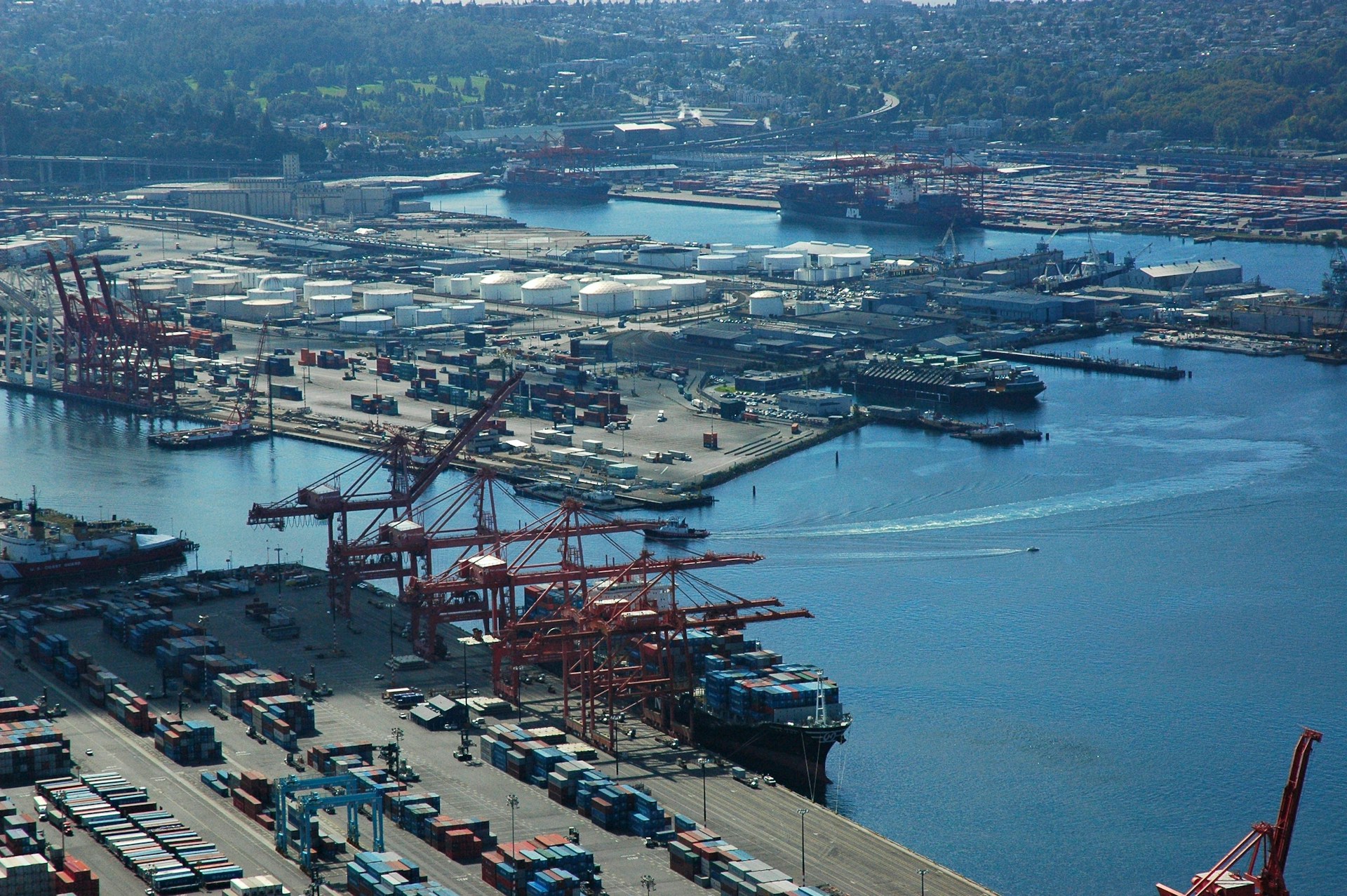Managing a shipping team in the produce industry can prove to be a highly challenging task, with numerous elements coming into play.
It requires sharp logistical skills, firm understanding of the supply chain, and a dash of managerial acumen.
Ensuring the team functions optimally, while also guaranteeing the produce reaches the market in pristine condition, is the ultimate goal.
However, the processes supporting this goal can be complex.
This article aims to demystify these processes, offering practical advice and effective strategies for boost performance.
Keep reading for insights that can profoundly impact the way you steer your shipping team.
Tips For Managing A Shipping Teams In The Produce Industry
1. Train Teams in Produce-Specific Handling/Transportation
As a fundamental component of managing a shipping team in the produce industry, training is both essential and indispensable.
The team must be well versed and competent when it comes to specifics of handling and transporting produce.
Why is produce-specific knowledge crucial? The perishable nature of produce makes it different from other goods and commodities.
Handling and transporting produce require specific knowledge and expertise to ensure its freshness and quality during transit.
When food items are not handled correctly, it can lead to waste, increased costs, and potential health risks.
Providing training in produce-specific handling and transportation techniques allows the team to understand the importance of their role in minimizing these risks.
Not only should training cover the essentials in produce handling, but it should also include transportation logistics specific to perishable goods.
Learning how to correctly load and unload different types of produce, understanding the optimal temperature conditions, and knowing the right packaging techniques are all integral parts of this training.
More importantly, the training must emphasize the industry’s safety protocols and best practices.
For example, lifting techniques for heavy objects or refrigeration temperature controls to prevent foodborne illnesses are all vital knowledge points for employees in this industry.
These trainings not only equip the team with practical skills, but they also instill a sense of responsibility and appreciation for their vital role.
It is also crucial that training is not a one-off event but rather an ongoing process.
Regular training sessions can help to keep the team up-to-date on the latest developments in the industry or teach them new techniques and technologies.
Learning refresher courses are key to ensuring the team’s skills are updated and that they are always ready to meet the demands of their roles.
Ultimately, investing in training will pay off in the form of a more effective and efficient shipping team who are well-prepared to the specific demands and responsibilities that come with handling perishable goods while in transit.
Thus, one of the primary tips for managing a shipping team in the produce industry is to provide them with the right training and knowledge to do their job well.
2. Implement a Robust Inventory Tracking System
When considering the proper management of produce shipping teams, it’s crucial to implement a robust inventory tracking system.
An effective tracking system not only helps in maintaining the quality of the product, but also aids in preventing unnecessary losses.
In the fast-paced produce industry, having a real-time and precise view of your inventory can be a game changer.
This is particularly important when dealing with perishable goods, where product lifetime and quality can be substantially affected by inefficient management.
On the other hand, an efficient inventory tracking system allows a company to properly manage their supply, forecast future demand accurately and minimize waste.
Therefore, it’s essential that your inventory tracking system is accurate, up-to-date and easy to understand.
Modern technology like artificial intelligence and machine learning can greatly improve the efficiency of an inventory management system.
This will allow the shipping teams to quickly adapt to fluctuating supply and demand, ultimately optimizing the delivery process across the entire production chain.
Moreover, digitally-enabled inventory tracking can facilitate seamless communication between different sectors of your business.
Not only can it enhance the speed and accuracy of shipping operations, it can also reduce labor costs by automating several manual tasks.
Such an investment can significantly boost the overall productivity and efficiency of your shipping teams.
Implementing this type of structure also promotes accountability since everything is tracked and traced from the farm to the customer.
A considerable benefit of a good inventory tracking system is that it mitigates risks. How? It provides constant visibility of the entire shipping process.
This allows the shipping team to identify and rectify any discrepancies or errors immediately, thus preventing larger issues down the line.
In summary, implementing a robust inventory tracking system in the produce industry is a necessity, not a luxury. This tool will fortify your shipping processes and ensure the growth and sustainability of your business.
3. Regularly schedule and monitor equipment maintenance
One of the most important aspects of managing a shipping team in the produce industry is the regular scheduling and monitoring of equipment maintenance.
This cannot be overstated, as the performance of equipment can have a significant impact on the smoothness of transporting produce.
The type of equipment used in shipping produce often depends on the type of produce, but it often includes refrigerated trucks, forklifts, pallets, and refrigeration units in warehouses.
All of these pieces of equipment require regular maintenance to ensure that they function optimally and reliably.
Failure to maintain equipment can lead to unexpected breakdowns and delays in shipment schedules, which can harm the quality of the produce and the reputation of the shipping company.
By conducting regular maintenance checks on your equipment, you can avoid unexpected problems and ensure that your shipments arrive on time and in excellent condition.
When scheduling maintenance, it’s important to consider the seasonality of produce.
For example, equipment might be used more heavily during peak harvest seasons, so planning for maintenance before these seasons can prevent unexpected breakdowns.
Not only should maintenance be scheduled, but it should also be closely monitored.
Any issues discovered during maintenance checks should be addressed as soon as possible to prevent further problems.
A comprehensive maintenance log should be kept for each piece of equipment, detailing when it was last serviced, any issues encountered, and when it is due for its next service.
Keeping an up-to-date maintenance log can spot potential issues before they become major problems and can also be useful for legal compliance and auditing purposes.
Finally, it is important to have a well-trained team that knows how to use and maintain the equipment properly.
They should be familiar with the basic maintenance tasks that need to be performed regularly and know when to alert management if they notice any unusual performance or deterioration.
Investing in regular training for your team on equipment handling and maintenance can pay off in the long run with smoother operations and fewer unexpected problems.
4. Ensure compliance with food safety regulations
In the world of produce shipping, food safety compliance is not a mere option, but a strict necessity.
Shipping teams have a direct impact on the cleanliness and the overall safety of the produce they handle.
Neglecting to follow food safety regulations can not only result in penalties but can also damage the reputation of the business.
The Food and Drug Administration (FDA) sets these regulations as part of the Food Safety Modernization Act (FSMA).
The rules are designed to ensure the safe transport and handling of food products to protect public health.
They cover aspects from adequate temperature control during transportation to proper sanitation methods among the shipping team.
It is, therefore, of utmost importance that all shipping team members are not only trained in but also routinely reminded of these protocols.
The regulations also require documented proof of the efforts taken to ensure food safety.
This implies maintaining thorough records of the shipping process, such as temperature logs, cleaning schedules, and incident reports.
Routine self-checks and inspections can help ensure the ongoing adherence to these protocols.
This not only aligns with the regulatory requirements but also contributes to a safer, more efficient operation.
Organizations may also choose to obtain certifications such as Safe Quality Food (SQF), Global G.A.P., or similar ones which focus on the overall quality and safety of the food supply chain.
This helps build trust with their customers and highlights their commitment to food safety.
Moreover, creating a culture of compliance within the shipping team helps establish normative behaviours.
This directly influences their efficiency in maintaining the safety of your produce during transportation.
A significant part of ensuring such food safety compliance lies in providing relevant training and support for your shipping teams.
5. Foster a Culture of Clear, Proactive Communication
To manage a shipping team effectively in the produce industry, it’s essential to foster a culture of clear, proactive communication.
This practice goes beyond merely exchanging information; it involves making every team member feel heard and considered in every decision-making process.
In the fast-paced world of produce shipping, many processes are happening simultaneously, and the need for accurate and timely communication cannot be overstressed.
By creating an environment that encourages open dialogue, it facilitates problem-solving, improves workflow, and ultimately contributes to the success of the operation.
Team members should feel confident voicing their opinions, asking questions, and raising concerns.
Cultivating a culture of open communication encourages employee engagement, as well as creativity and collaboration.
Through proactive communication, individuals are also better placed to predict and prevent potential issues, rather than always being in reactive mode.
It’s essential to regularly review communication processes and explore newer, more efficient channels that could improve information flow.
Unlike reactive communication where you wait for a problem to occur before communicating, proactive communication, if well implemented, helps predict and manage setbacks before they happen.
Utilize communication tools like video conferencing, online team collaboration tools, and other technology platforms that enable fluid interaction.
Remember, clarity in communication reduces the likelihood of errors in the transportation process.
Communication training could also be an excellent way to enhance communication skills across your team.
Please pay close attention to your team’s feedback as it is an invaluable resource that helps understand how well your communication strategy is working and areas that require improvement.
It is also critical to clearly communicate the mission, vision, and goals of your organization.
Having shared objectives helps everyone understand their roles thus prompting a shared sense of responsibility in driving success.
It is crucial, therefore, not to underestimate the potential effect of good and proactive communication on the effectiveness of your shipping team in the produce industry.
The Bottom Line
With proactive strategies in place, there is a clear path to improve handling and transportation of produce, maintain accurate inventory records, and regularly monitor equipment condition.
Ensuring compliance with food safety regulations is vital not only for the health and safety of consumers, but also to uphold the reputation and financial stability of your business.
Fostering a culture of clear, proactive communication will streamline all these processes, and ultimately contribute to the improvement of overall efficiency and efficacy of the business.
The steps outlined, if effectively implemented, promise to elevate the quality of service and product, thereby bolstering the customer satisfaction and business success.




